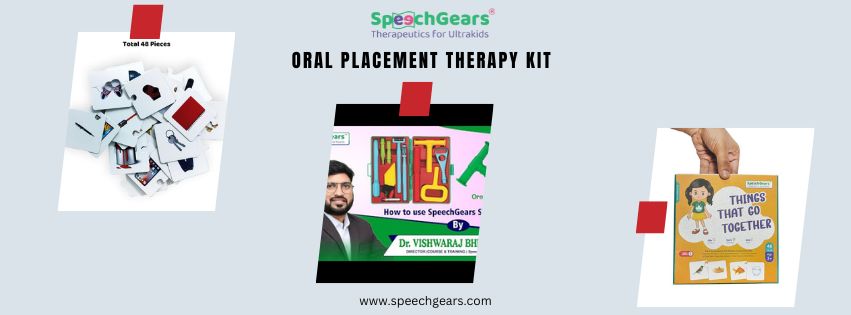
We may comprehend oral placement treatment or OPT as a speech cure. It employs a variety of hearing, tactile, and optical impulses. These stimulations are used in the mouth to enhance speech clearness.
OPT has become an essential addition to standard speech therapy. These methods help those clients with placement and movement deficits. Such patients may remain hypersensitive or tactile defensive or hypersensitive to tactile input.
They may have mixed or fluctuating tactile responsivity. Therefore, doctors use oral placement therapy kits to improve speech clarity in such clients. It helps develop speech or sound production beyond phonemes and other equivalent oral activities.
Importance of Speech Production and Clarity Improvement
OPT has become an assertive expansion of classic speech therapy techniques. It is appropriate for customers with placement and motion deficiencies. The procedure acts as a tactile-proprioceptive teaching technique.
It primarily accompanies auditory and visual traditional therapies. We may understand that speech remains a tactile-proprioceptive act. Thus, clients with motor and/or sensory impairments gain from tactile and proprioceptive elements.
OPT improves articulator understanding, arrangement, strength, and muscle recollection. These steps are necessary for speech clarity development with an oral placement therapy kit.
Benefits of Oral Placement Therapy
Clients of any age and ability level can use oral placement therapy. It is included in program plans for various speech disorders. Some speech ailments comprise dysarthria, fluency disorders, and apraxia of speech voice diseases.
Individuals identified with Down syndrome and cerebral palsy get help from the Talk Tools program. This program is reasonable for people with rare syndromes, including Rett syndrome & Angelman – syndrome.
Talk tools program benefits those suffering from autistic spectrum conditions. It helps people with the development of verbal dyspraxia, feeding difficulties, and/or dysphagia.
Tools Used For OPT
We may understand the benefits of an oral placement therapy kit.
Vibration Device and Speech Tools
This group of tools includes V-pen, uni-tip, pointed-tip, and talk-tip.
V-Pen
V-pen is famous for speech therapy as a vibrating oral motor instrument. This tool provides benefits for feeding therapy and many other applications. Speech therapists use this device to provide oral stimulation and tactile cues.
This tool decreases oral aversions and normalizes oral sensitivities. The therapist utilizes a V-pen to reduce drooling, ease, concentrate, comfort, and self-organize.
They use the tool to improve oral motor skills. V-pens become reusable when you wash them after removing the motor and battery.
Uni-Tip
You may get a uni-tip in the oral placement therapy kit. This healing and exceptional oral motor device is created for kids aged 2.5 and above. Uni-tip stimulates the gum, lips, palate, and cheeks by applying moderate pressure. We may use this tool with a V-pen. It assists with speech, feeding, and sensory problems.
Pointed tip
A therapist operates this thin-tip tool that tightens down roughly the size of a pencil tip’s diameter. It is utilized for various assignments. These tasks include directing the articulators during speech or feeding therapy. They may operate this tool to provide tactile oral sensory integration. Pointed-tip does not have harmful chemicals like PVC, latex, lead, phthalates, and BPA.
Talk-Tip
The oral placement therapy kit includes talk-tip elevation. This therapy has helped the user lift their tongue tip to the alveolar crest. This ridge is the highest point on the tongue’s surface. The therapist knows the importance of elevating the tongue tip to produce specific speech sounds. Talk tips help develop oral motor skills.
Teethers and Chew Tubes
The kit includes teethers & chew tube tools like hickey, oro-tube, and sensory-bite.
Hickey
It is made of food-grade plastics free of latex, heavy metals, BPA, PVC, and phthalates. This tool is intended to cover the mouth completely. Clients munch hickeys with the incisors, molars, canines, and back molars.
Hickey is included in the oral placement therapy kit to strengthen the jaw point. It has spikes that help reduce tactile sensations in the mouth. This tool assists in the reduction of irritation caused by developing teeth.
Sensory-Bite
This tool enhances the muscular tone of the jaw. It helps to improve tactile issues of gums. The sensory-bite tool eases users in irritation due to developing teeth. It has an area for smooth holding with its stem reaching molar teeth. This device reduces and increases saliva functions.
Oro-Tube
We may know that oro-tube is a new age of oral motor instruments. It provides a resilient and chewable surface for practicing biting & chewing skills without consuming food. A therapist includes an oro-tube in the oral placement therapy kit.
This tool is designed to use ‘Oral Tactile Treatment’. It provides oral sensory input and strengthens the muscle’s mature biting function. Oro-tube aids in initiating and closing the jaw to construct an activity for nourishing and communicating.
Tongue Lateralization & Elevation Tools
TT-LR & TT-UD
TT-LR & TT-UD tools lateralize the tongue. They promote separate tongue moves over the midline. These devices work as oral motor support that pushes the tongue from side to side. They demonstrate up-and-down tongue lateralization.
Tongue-Steer
A therapist or parents may use tongue-steer. It helps maneuver the child’s tongue to the extent they find difficulty. You may find this tool in the oral placement therapy kit. It helps demonstrate the placement of the tongue in a particular position to articulate a specific sound. A tongue-steer has three dots to deliver impulses. The sides of the tongue have these stimulants to address tactile issues.
Conclusion
You may rely on Speech Gears to get various therapy tools. It will allow your kid to enrich their oral motor aptitudes. They may enhance their speech clarity through different devices. It instructs oral structural order to those who cannot create or mimic speech sounds.
This therapy allows for extended speech sound production from phonemes. It assists in refocusing attention and concentration from a sensory processing perspective. Thus, an oral placement therapy kit helps for different reasons. It stimulates motions employed in the targeted speech production.